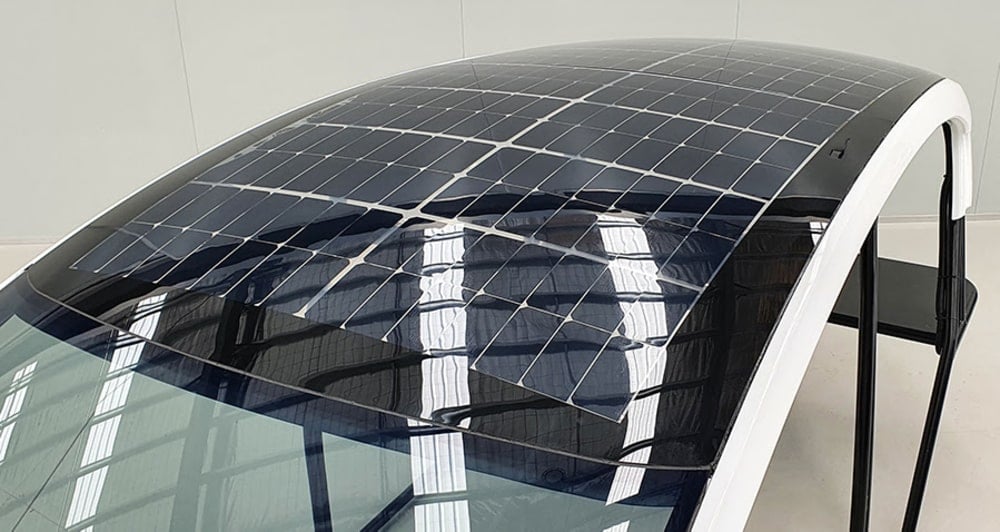The turning point for solar cars has been reached. This is stated in Solar Vehicles 2021-2041, a report brought out by IDTechEx. This is a market research firm that studies emerging technologies. The British research firm warns that manufacturers who have no plans for solar cars are going to fall by the wayside.
The retractable solar screen for pickup trucks is made up of a solar sail that runs across the front and a sail that goes over the freight at the back
The leaps and bounds forward that solar cars have made are primarily due to the expanding capabilities of monocrystalline silicon solar cells (scSI for short). These now supply 50 percent more electricity per unit area than before. They are also so flexible that they can be applied to, for example, the sides of vehicles. The development in solar cell technology is going so fast that the IDTechEx report was republished last month in a revised version. The first version dates from the beginning of 2020.
Retractable solar tarp
The study expects the solar car market to reach €15 billion by 2030. It is set to hit the €40 billion mark ten years after that,
IDTechEx has come up with its own future concept of an electrically retractable double solar screen for pick-up trucks while they are stationary. It consists of a ‘solar tarpaulin’ that can be pulled over the front and one that goes over the load at the rear. Plans are that this will be made of copper-indium-gallium biselenide, a semiconductor material used in the production of solar cells. The generated energy would be a maximum of 1 KWh.
Solar-powered bodywork
Solar Vehicles 2021-2041 cites specific examples of the various developments. It has taken a closer look at 22 different manufacturers who are developing 100% solar cars.
Germany’s Sono Motors, who will bring out the first car featuring a solar-supported bodywork in 2023, stands out. The solar panels of the Sion, as the car is called, replace some of the steel and paintwork, saving on costs. Earlier this year, Sono also demonstrated a solar-powered truck. Sono Motors has signed a licensing agreement to run the EasyMile robotic shuttle on solar power. Now that private cars are being barred city centers (a trend that IDTechEx expects will only increase) robotic shuttles are taking over.

The Dutch company Lightyear is also showcased as a good example where the use of monocrystalline silicon solar cells is concerned. The report also points to the test vehicles of Australia’s Applied EV that has developed a new polycarbonate solar roof in collaboration with Japan’s Teijin. The solar cells mounted on the so-called Panlite roof have an output of about 330 watts.
Solar cars
Established automobile manufacturers are also developing solar cars. Hyundai has announced that it will develop translucent sun-resistant bodies for its existing range. However, IDTechEx warns that solar cars have no future if existing models are merely converted. According to the report, solar cars will only have an impact if they are born as such.
Read more articles on Lightyear and Sono Motors.
"industry" - Google News
March 26, 2021 at 03:01PM
https://ift.tt/2PA2yYY
Automotive industry can no longer ignore solar cars - Innovation Origins
"industry" - Google News
https://ift.tt/2RrQtUH
https://ift.tt/2zJ3SAW
Bagikan Berita Ini















0 Response to "Automotive industry can no longer ignore solar cars - Innovation Origins"
Post a Comment